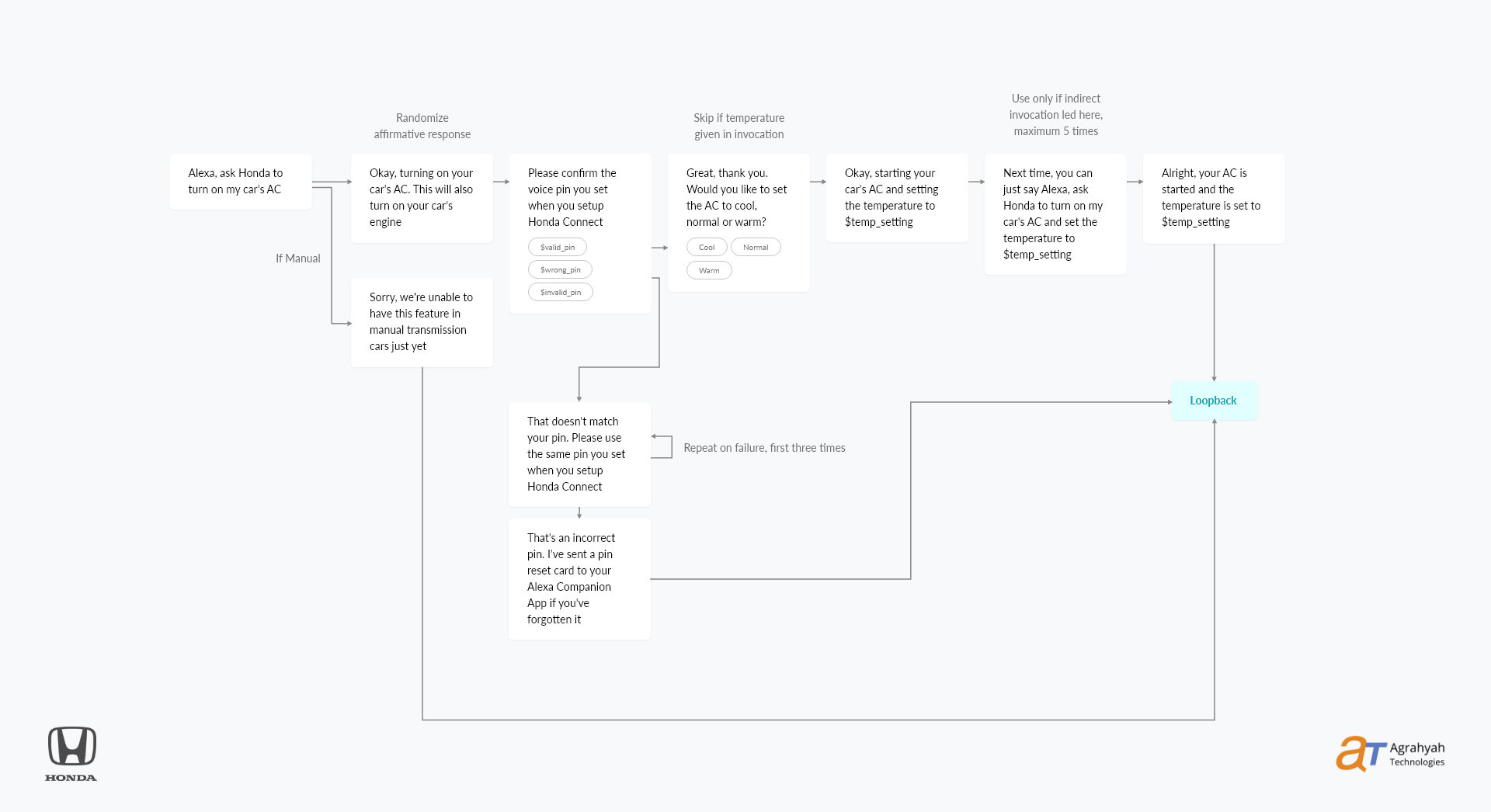Introducing the Honda City to Alexa.
Conversational Design
//
Agrahyah

Introduction
Honda (Honda Cars India Ltd.) built a mobile app called Honda Connect that allowed customers to perform remote operations on their cars, and with this project, HCIL aimed to take that further by bringing the remote operations as well as a discovery module to a voice interface. Customers would be able to invoke the Alexa skill and perform a remote operation, access their service history, or explore the manufacturer’s offerings.
My Role
Agrahyah was selected as the agency to build the voice experience for Honda Connect, and I headed design for the project. I designed the voice interface and conversational experience, collaborated with the stakeholders and content manager to create and refine the scripts, and worked with engineering to translate the user journeys to a voice assistant’s flows.
Business and User Value
By bringing Honda Connect to Alexa, HCIL aimed to provide an edge over the competition and embrace the rapid adoption of voice-first interactions that the Indian subcontinent was seeing. Early research also showed customers preferring the seamless and natural mode of interaction that voice offered, as opposed to pulling out their phones and opening the app to carry out the remote operations.
Ideation
As a precursor to selecting a partner agency, Honda had carried out multiple rounds of research that validated the need for voice-based remote operations, and when we were onboarded, the insights and requirements were handed over to me. The initial phase involved ideation and customer journey exploration, wherein I defined critical paths, came up with user flows, and outlined the brand persona.
Designing the VUI
With the structure and plan in place, the next step was designing the voice user interface. VUIs are more experiential and less visual, and unless the target device has a screen, visual elements are completely overlooked. In this case, the Echo Show wasn’t a target device, so my design consisted of flows that guided the user from the skill’s welcome intent to fulfillment, and scripts that the voice assistant would use along the way.
Each journey was designed with the fastest path to fulfillment in mind, while accounting for the typical edge cases that come up in voice design, like incomplete sentences, background noise, partial voice capture, and more.
Impact
Upon completion of design and engineering, the skill was sent to Honda for final sign-off, and to Amazon for certification. The stakeholders were pleased with how it had turned out, and immediately set into motion the subsequent launch of the fifth generation Honda City, which was the flagship car for the venture. The launch was well met by both consumers as well as the press, with the Financial Express saying “The 2020 Honda City will join the list of growing Internet-connected cars in India but will be the very first to introduce Alexa remote capability making talking to the car and accessing functions a lot easier.”
Takeaways
Designing for a product at this level of scale, that went beyond our screens and was implemented in cars was an exciting experience. While I’d worked on VUIs before, a project of this size and quality helped me hone my, VUI and UX writing skills, and understand user contexts in real world, non-digital settings.